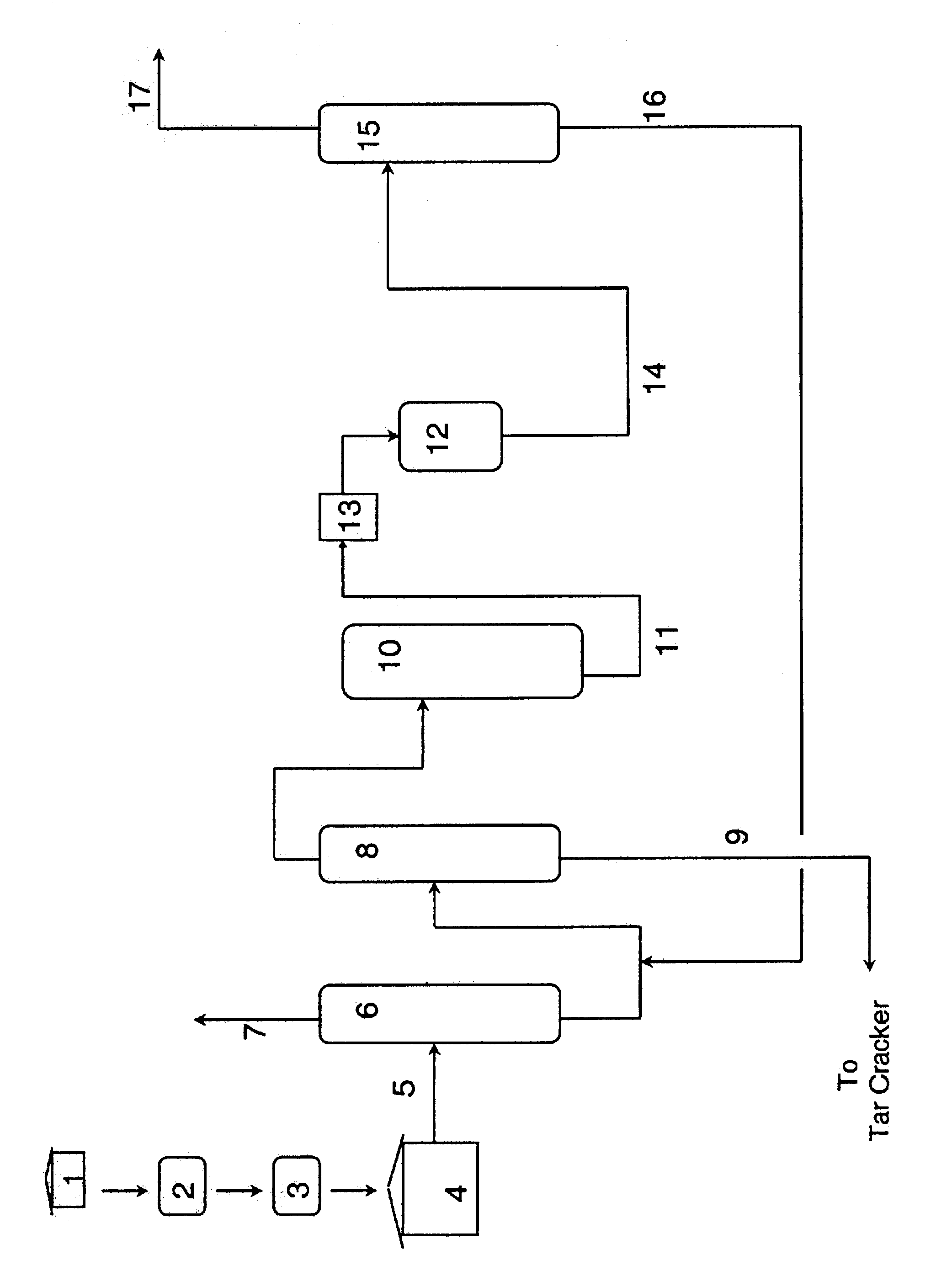Production and purification of phenol: hydroxyacetone removal by hydrotalcite
- Summary
- Abstract
- Description
- Claims
- Application Information
AI Technical Summary
Benefits of technology
Problems solved by technology
Method used
Image
Examples
example 2
The method of Example 1 was repeated with the same raw materials, at the same operating conditions, but this time the HTM catalyst was PuralMg-70 pellets that had been crushed into a fine powder. The HA conversion in the resulting reaction mixture was found to be 94%, and 1.1% of 2MBF (2 ppm-11 ppm) was found in the reaction mixture.
example 3
The method of Example 2 was repeated at the same operating conditions, however, the HTM catalyst used was the one recovered from the experiment in Example 2. The HA conversion in the resulting reaction mixture was found to be 94%, and the amount of 2MBF was 0.2% (or less than 1 ppm-2 ppm). These results show that the catalyst is just as effective after being recycled once.
example 4
The method of Example 3 was repeated at the same operating conditions, however, the HTM catalyst used was the one recovered from the experiment in Example 3. The HA conversion in the resulting reaction mixture was found to be 94%, and the amount of 2MBF was 0.3% (or less than 1 ppm-3 ppm). These results show that the catalyst is just as effective after being recycled twice.
PUM
| Property | Measurement | Unit |
|---|---|---|
| Fraction | aaaaa | aaaaa |
| Fraction | aaaaa | aaaaa |
| Angle | aaaaa | aaaaa |
Abstract
Description
Claims
Application Information
 Login to View More
Login to View More - R&D
- Intellectual Property
- Life Sciences
- Materials
- Tech Scout
- Unparalleled Data Quality
- Higher Quality Content
- 60% Fewer Hallucinations
Browse by: Latest US Patents, China's latest patents, Technical Efficacy Thesaurus, Application Domain, Technology Topic, Popular Technical Reports.
© 2025 PatSnap. All rights reserved.Legal|Privacy policy|Modern Slavery Act Transparency Statement|Sitemap|About US| Contact US: help@patsnap.com

